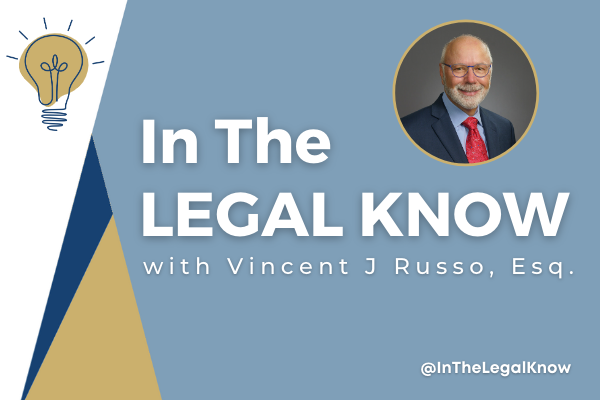This originally aired on the Catholic Faith Network’s show CFN Live: https://youtu.be/aQgwbQkJtC0 How can SSI…
How Do I Disinherit Someone in My Will?
 Oftentimes when creating an estate plan, it is requested that a family member or friend be disinherited. There are many reasons why one would chose to disinherit someone. Perhaps the person creating the estate plan has already provided the family member or friend with gifts during his or her lifetime. Perhaps he or she wants to avoid disqualifying the person from government benefits. There might have been a falling out between the individuals. Or there might be tax reasons for wanting to disinherit.
Oftentimes when creating an estate plan, it is requested that a family member or friend be disinherited. There are many reasons why one would chose to disinherit someone. Perhaps the person creating the estate plan has already provided the family member or friend with gifts during his or her lifetime. Perhaps he or she wants to avoid disqualifying the person from government benefits. There might have been a falling out between the individuals. Or there might be tax reasons for wanting to disinherit.
No matter what the reason is, it is important to understand the potential pitfalls of disinheriting someone.
When you disinherit someone, it means that they are excluded from taking your assets when you die. Some people chose to have their estate planning documents (e.g., Last Will and Testament, Trust, etc.) drafted in a way that excludes or limits the inheritance of a particular friend or family member. Others may have estate planning documents already in place that name a particular friend or family member and now want to remove them or revise their benefit in their estate planning documents. Sometimes the family member is a close family member such as a spouse or child.
There is no law against disinheriting an adult child; however, a surviving spouse in New York State has certain rights that may prevent them from being disinherited. It is important to consult with an experienced estate planning attorney before you decide to disinherit your spouse (or anyone for that matter).
The biggest caveat to disinheriting someone is the prospect of the will being contested by the person who has been excluded. There are some strategies to limit the risk of a will contest.
One strategy to safeguard against a will contest is known as “stacking” your wills. This means that you execute a new Last Will and Testament periodically with minor revisions, but substantially the same provisions. This way, if your Last Will and Testament is offered for probate when you die, and is contested and determined to be invalid, a very similar will takes its place.
Another common strategy used to deter beneficiaries from contesting your will when they are disinherited is known as an in terrorem clause, which is also known as a no-contest clause. This is a clause in your will that says if anybody contests the will or any provision in it—if they are not successful in the contest—they will lose any benefit that is given to that person under the will. This clause is meant to discourage a beneficiary from contesting a will. It should be noted that an in terrorem clause is only as good as what the beneficiary stands to lose. For instance, if there was nothing left to a disinherited family member or friend, he or she has nothing to lose by contesting it. So it may make more sense to provide a small bequest to the family or friend.
Another option for disinheriting someone is to change the beneficiary on your bank and brokerage accounts. For example, consider John and Yoko who recently got married. Shortly after their honeymoon, John changed the beneficiary on his bank accounts from Ringo to Yoko. By doing this, John effectively disinherited Ringo.
Depending on the reason for disinheriting someone, you should consider the alternatives. For instance, if you are concerned about a child’s drug use, gambling, creditor issues, or general inability to handle money, and think that he or she should be disinherited so that your assets don’t contribute to their addiction, you should consider providing for that child through a Family Asset Protection Trust, which is also known as a safe trust. This estate planning tool allows you to leave assets in a protective way for your child that will not be available to creditors or to the child directly.
If you are considering disinheriting your special-needs child, read this article.
Contact us today with questions or comments.



This Post Has 0 Comments